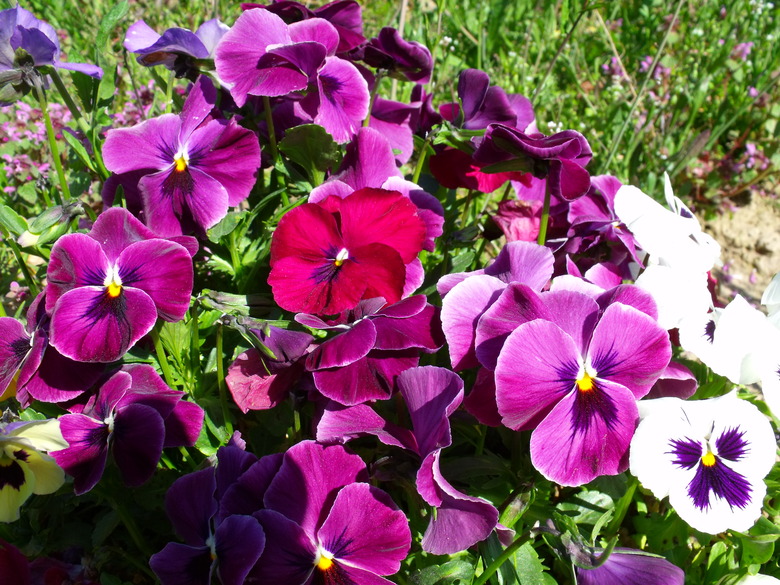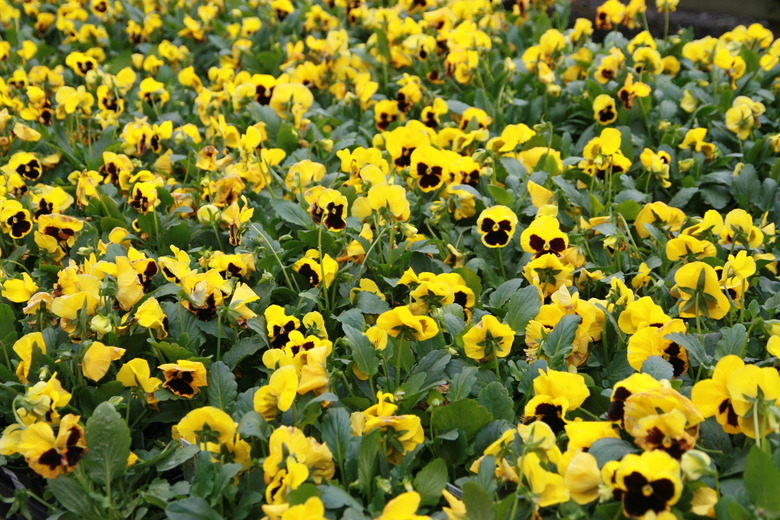Do Pansies Come Back Each Year Or Die Off In The Summer Heat?
Available in a wide variety of flower colors and sizes, pansies (Viola × wittrockiana) are one of the most popular kinds of bedding plants. Pansies are cold-weather biennial plants that do not tolerate summer heat.
Pansies are winter hardy in U.S. Department of Agriculture plant hardiness zones 6 to 10, though they require winter protection to survive in the northernmost part of this range.
Pansies are usually in bloom for four to six months before they die off with the onset of summer temperatures.
Characteristics of Pansies
Pansies are grown for their attractive, flat flowers, which have five petals that overlap and markings that are described as "face-like." Many also exhibit whiskering.
Most of the commonly grown pansies today are hybrids that come in shades of purple, blue, yellow, red and pink, and there are plenty of bicolored options from which to choose as well.
Pansies have a typical height of about 8 inches. Flowers may be 2 to 4 inches wide depending on the cultivar. These plants are suitable for bedding as well as for window boxes.
Are Pansies Annuals or Perennials?
Pansies are considered biennials, which means they can live for two growing seasons. However, because they are easy to find and are inexpensive to purchase as seedlings, they are often grown as annual plants that are enjoyed in the spring and then discarded when they fade in the summertime.
To grow pansies as biennials, plant them in the fall. In locations with mild winters, they will bloom throughout the winter and into spring. In climates that experience frost, the plants will stop blooming during the coldest stretches of winter and begin blooming again in the spring.
As a general rule, pansy cultivars with smaller flowers tend to fare better in places with cold winters than cultivars with larger flowers.
Do Pansies Bloom All Summer?
Pansies grow best when temperatures are around 60°F during the day and 40°F at night. Therefore, fall, winter and spring are considered pansy season. Pansies are usually in bloom for four to six months before they die off with the onset of summer temperatures.
Warning
Pansies can be planted in either full sun or part shade. But be warned that if they do not receive enough sun, then they may not flower and may become leggy.
How to Grow Pansies
While pansies can be grown from seed, when they are treated as annuals, they are often purchased in cell packs at nurseries.
If you are growing pansies from seed in northern climates, sow them at the beginning of July for an early spring bloom. In warmer southern climates, you can wait until July or August to sow seeds.
Pansies grow best in moist, fertilized soil. They should receive about an inch of water per week during the growing season. They can be planted in either full sun or part shade, but be warned that pansies that do not receive enough sun may not flower as well and may become leggy.
To extend the pansy bloom time during cool weather, be sure to remove spent flowers quickly. Applying a 5-10-5 fertilizer every four weeks during the growing season encourages strong plants with larger flowers.
If you are overwintering pansies north of USDA zone 8, you'll want to protect them with mulch in colder climates to prevent temperature fluctuations. Pine boughs and straw work well for this purpose.

